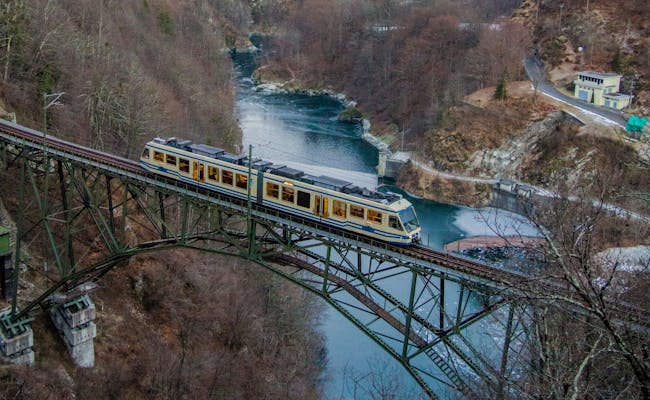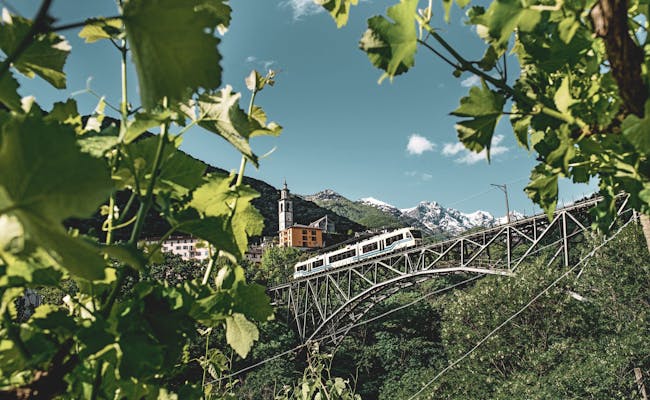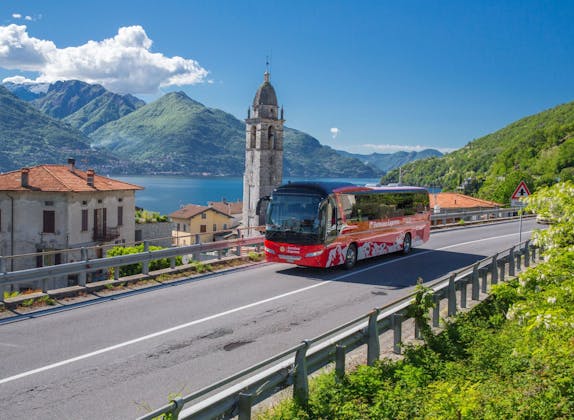
Bernina Express Bus reservation from Lugano or Tirano
Validity: All day

10 Activities
Filter
Better than 4.5 stars
Better than 4 stars
Better than 3.5 stars
Better than 3 stars
No Rating

Bernina Express Bus reservation from Lugano or Tirano
Validity: All day

Train Reservation Gotthard Panorama Express
Validity: All day
Why book with Swiss Activities?
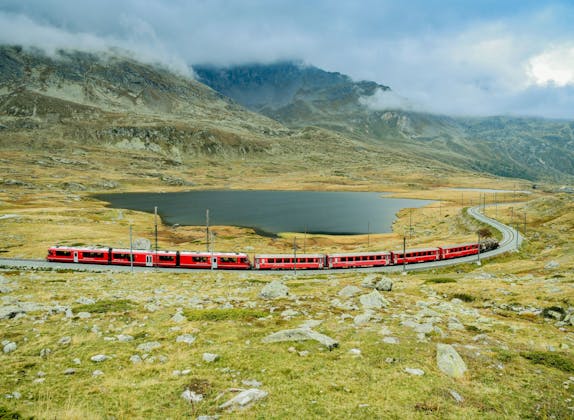
Ticket for the Bernina Route
Validity: All day

Lucerne - Interlaken Express Ticket (without reservation)
Validity: All day
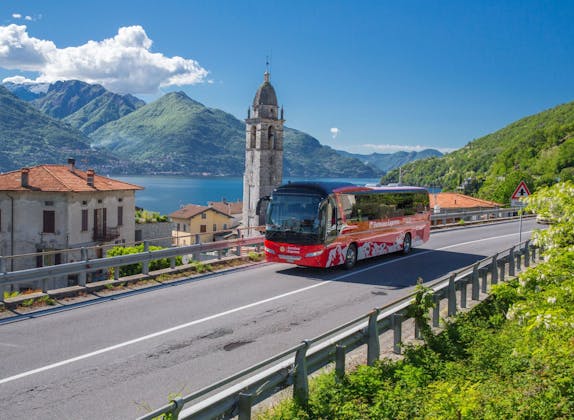
Bernina Express Bus ticket from Lugano or Tirano
Validity: All day

Centovalli train ticket between Domodossola and Locarno
Validity: All day

Voralpen Express Ticket from St. Gallen or Lucerne
Validity: All day

Golden Pass Express Ticket from Interlaken Ost or Montreux (without reservation)
Validity: All day

Glacier Express Ticket from St. Moritz or Zermatt (without reservation)
Validity: All day

Ticket
Bernina Express Bus reservation from Lugano or Tirano
booked 7 times

Ticket
Train Reservation Gotthard Panorama Express
booked 8 times
Why book with Swiss Activities?
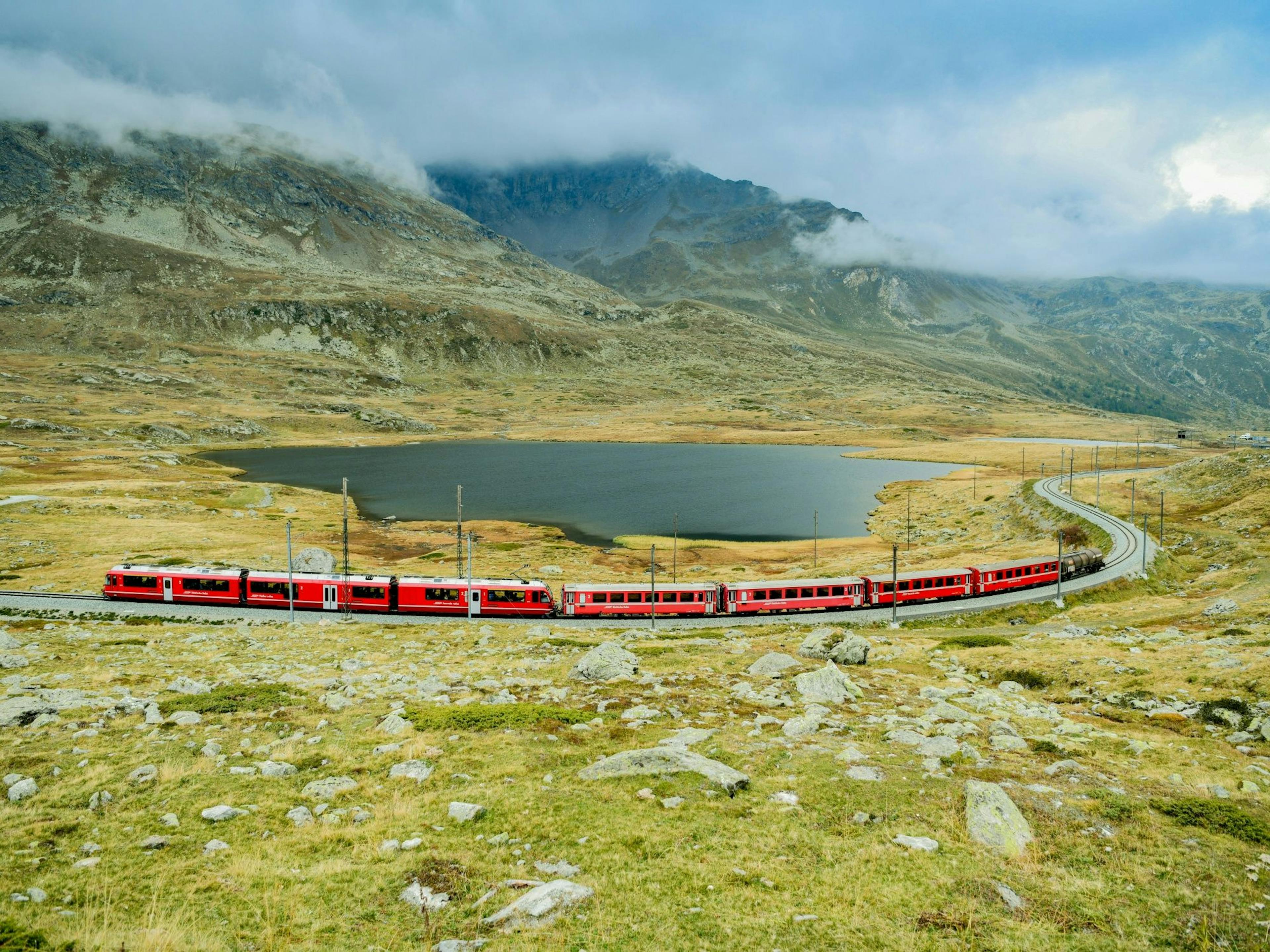
Ticket
High demandTicket for the Bernina Route
booked 581 times
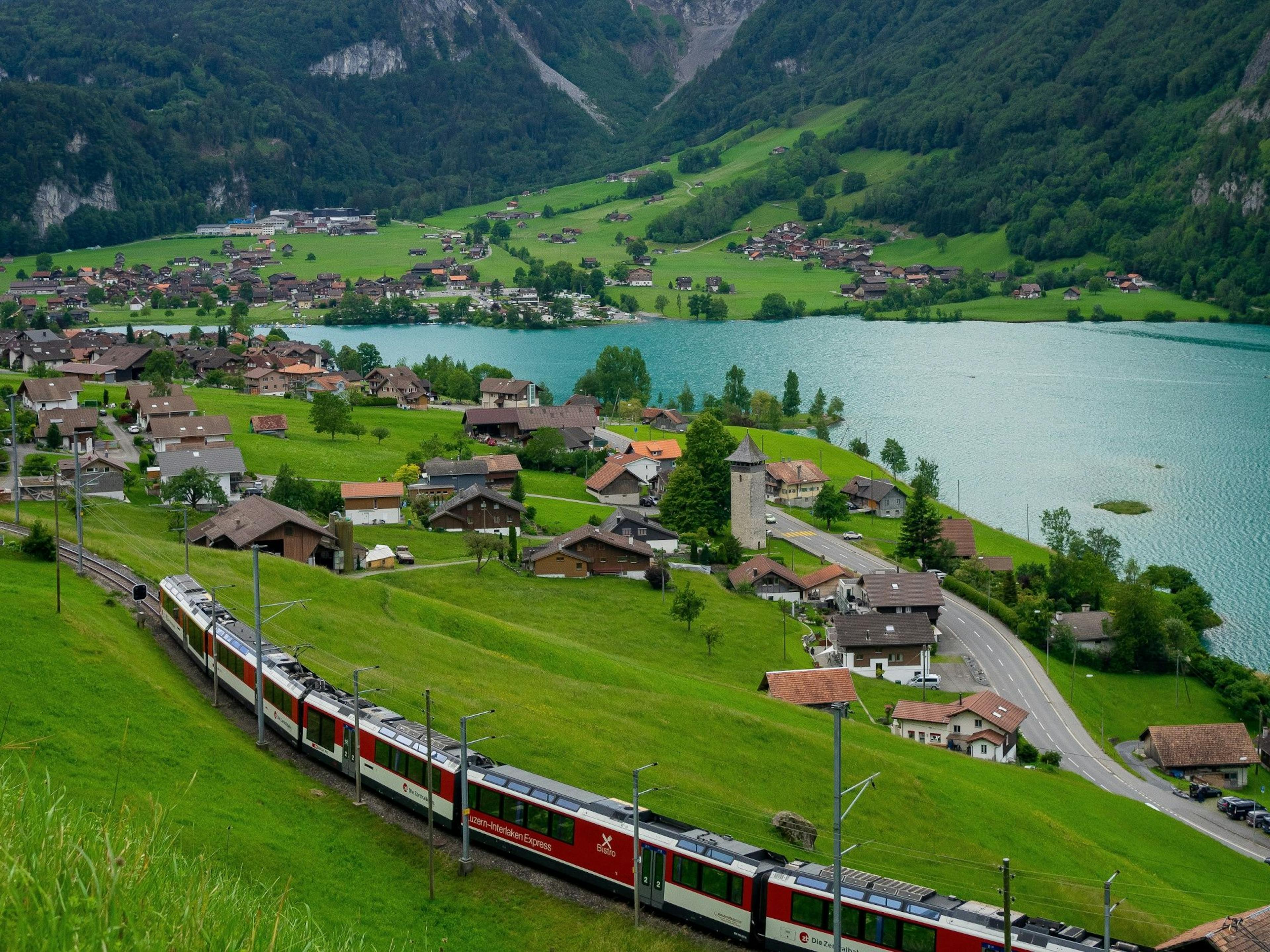
Ticket
High demandLucerne - Interlaken Express Ticket (without reservation)
booked 390 times

Ticket
High demandBernina Express Bus ticket from Lugano or Tirano
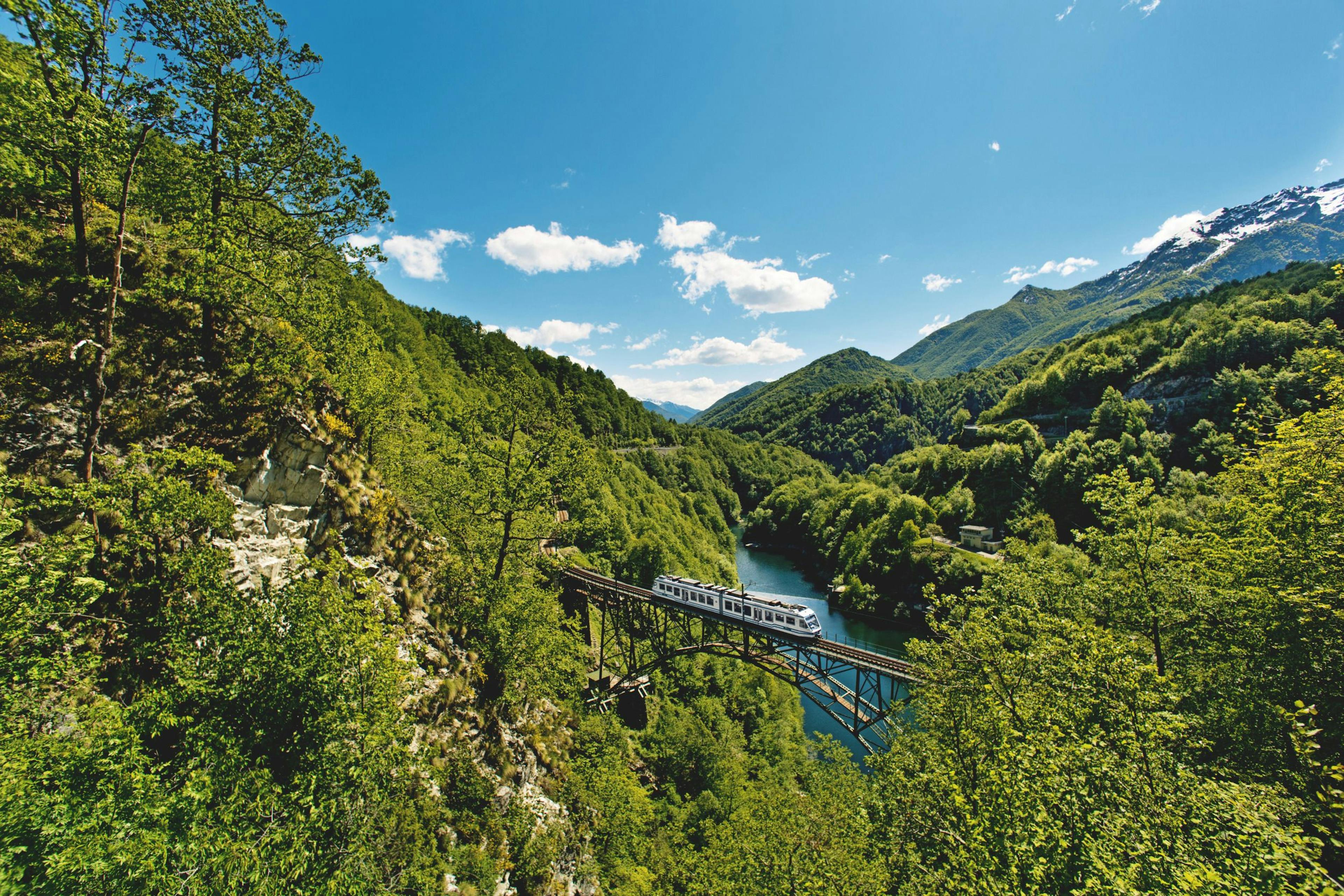
Tour
High demandCentovalli train ticket between Domodossola and Locarno
booked 11 times

Ticket
Voralpen Express Ticket from St. Gallen or Lucerne
booked 7 times
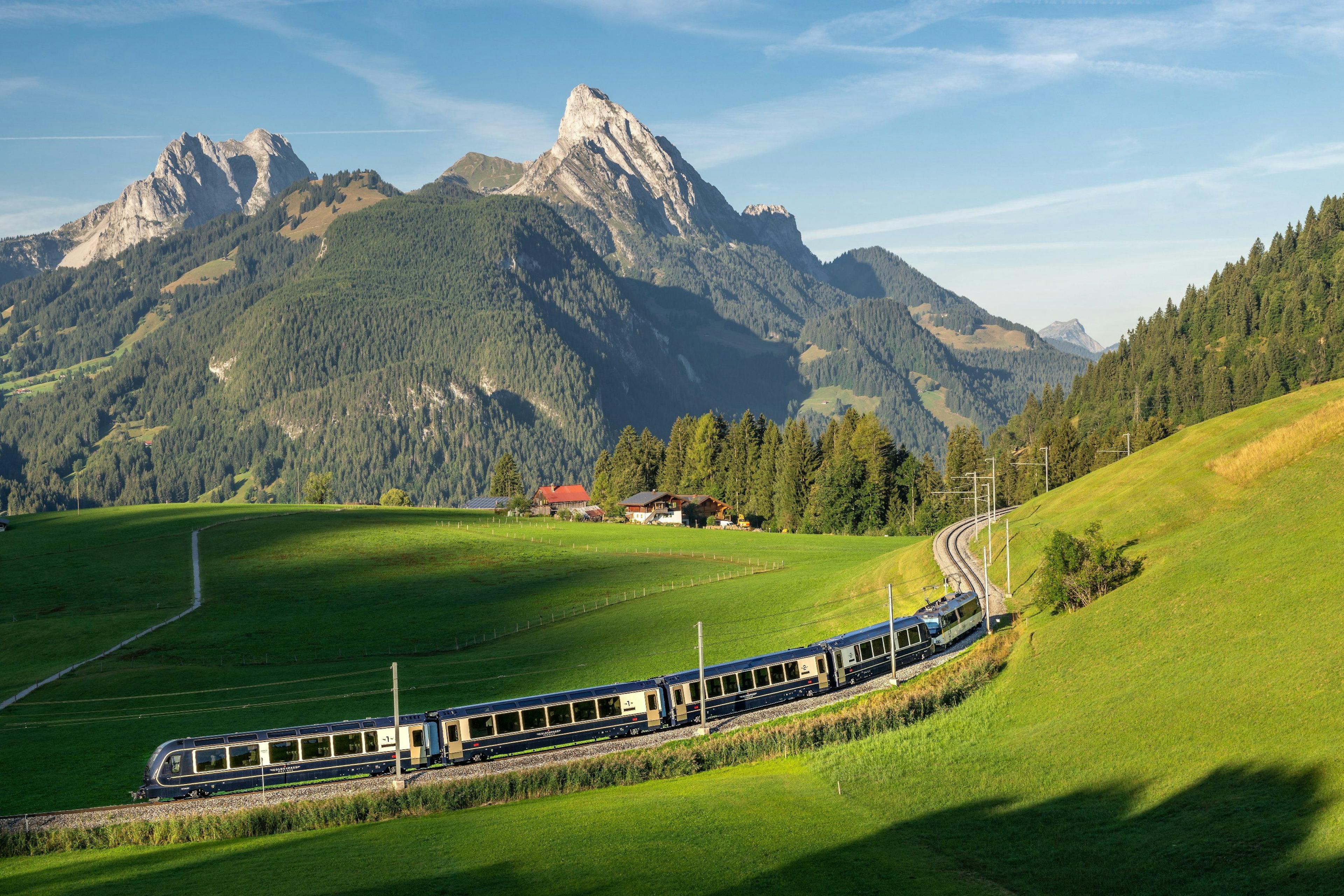
Ticket
High demandGolden Pass Express Ticket from Interlaken Ost or Montreux (without reservation)
booked 80 times

Ticket
Glacier Express Ticket from St. Moritz or Zermatt (without reservation)
booked 35 times
We've already mentioned in our article about public transport in Switzerland that the Swiss have a strong affinity for trains as a means of transportation. But did you know that the over 5300 km of tracks serve more than just quick travel from one place to another?
There are several train routes that you'd probably want to do multiple times in a row. This way, you can take a closer look at the beautiful scenery zooming by your window. Whether it's the ride from Zurich to Chur, which passes by the mystical Lake Walen, or the stretch from Fribourg to Lausanne, where you get an incredible view of the Lavaux vineyards and Lake Geneva right after the tunnel.
Train journeys and stunning views go hand in hand in Switzerland. If you want to embark on a train trip focused on these kinds of views, there are some partially world-famous panoramic trains that are sure to make your heart skip a beat.
Swiss Activities Tips: For the best help planning your journey on the scenic train through Switzerland, check out the Train Tour App. Plus, all the panoramic trains are covered by the Swiss Travel Pass and other train passes for tourists.
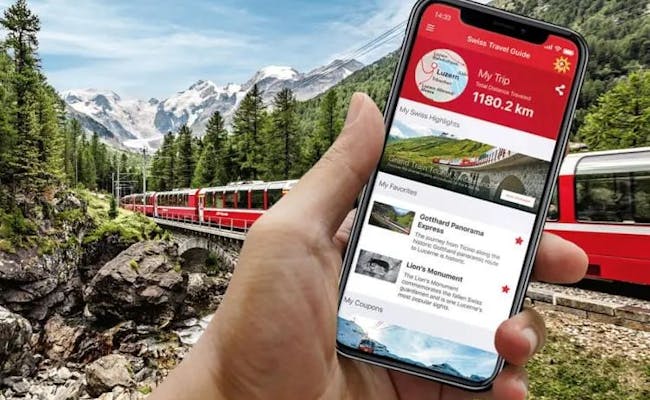 Plan your trip with the Train Tour App (Photo: Swiss Travel System)
Plan your trip with the Train Tour App (Photo: Swiss Travel System)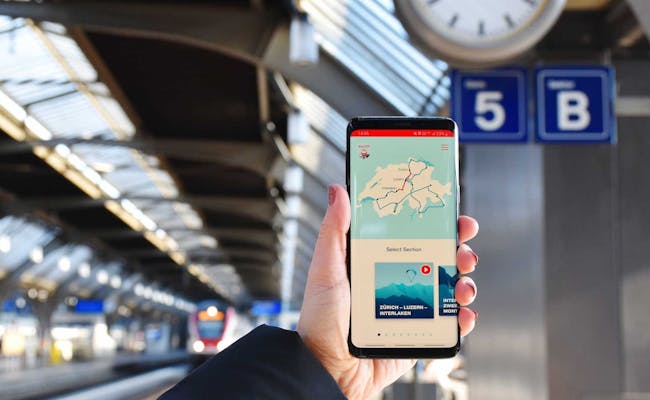 Trains in Switzerland (Photo: Swiss Travel System)
Trains in Switzerland (Photo: Swiss Travel System)The Glacier Express carries the nickname "the slowest express train in the world" and truly lives up to it. It travels a distance of 291 km between Zermatt and St. Moritz, going through 91 tunnels and crossing 291 bridges. It takes a whopping eight hours to complete this journey, resulting in an average speed of 36 km/h, which is about the pace a leatherback turtle can manage underwater.
The Glacier Express is operated by the two railway companies Matterhorn-Gotthard-Bahn (MGB) and the Rhaetian Railway (RhB). The MGB covers the route between Zermatt and Disentis, while the section between Disentis and St. Moritz is run by the RhB.
So, if you take the Glacier Express from St. Moritz to Zermatt, you’ll have plenty of time to soak in the stunning landscapes at turtle speed. In this experience report on the Glacier Express, you’ll find even more information about this scenic journey.
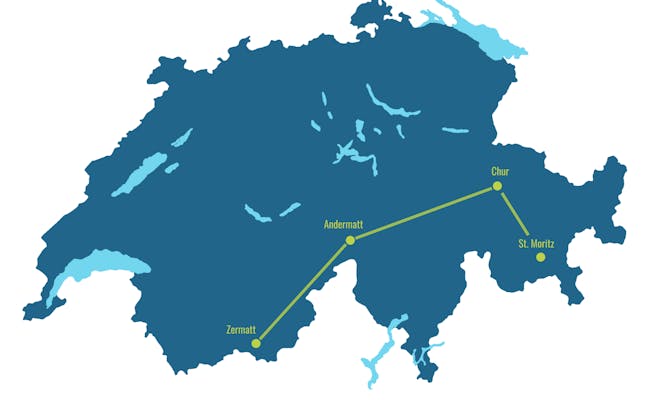 Glacier Express Route
Glacier Express Route Glacier Express (Photo: Swiss Travel System)
Glacier Express (Photo: Swiss Travel System)The Glacier Express runs between St. Moritz in the Engadin and Zermatt, the mountain village at the foot of the Matterhorn. Shortly after leaving St. Moritz, the Glacier Express travels along the winding Albula line.
On this railway line, the train crosses six viaducts and three hairpin tunnels to conquer the height between the Albulapass and Filisur. It was added to the UNESCO World Heritage inventory in 2008. Along this route, the train frequently switches sides of the valley and alters its direction, which makes it tricky to keep your bearings.
This segment of the Glacier Express also features the impressive Landwasser Viaduct, which transitions directly into a tunnel. The viaduct is 146 m long and 65 m high.
Next, the Glacier Express travels through the Rhein Gorge, also known as “Ruinaulta" or "Swiss Grand Canyon". If you start your journey in St. Moritz, you’ll have the best view of the Rhine Gorge on the left side of the train.
After a quick stop in Chur, the capital of the canton of Graubünden, the journey continues over the Oberalppass via Disentis/Mustér to Andermatt in the canton of Uri. Here, the Glacier Express reaches its highest point, passing by Oberalpsee, which is situated 2,044 meters above sea level.
From there, it’s mostly downhill alongside the Rhône river until Brig in the canton of Valais. After Brig, the Glacier Express makes another direction change and begins its last climb to Zermatt. Here, the Matterhorn is hopefully waiting eagerly for you and isn’t hiding behind a cloak of clouds.
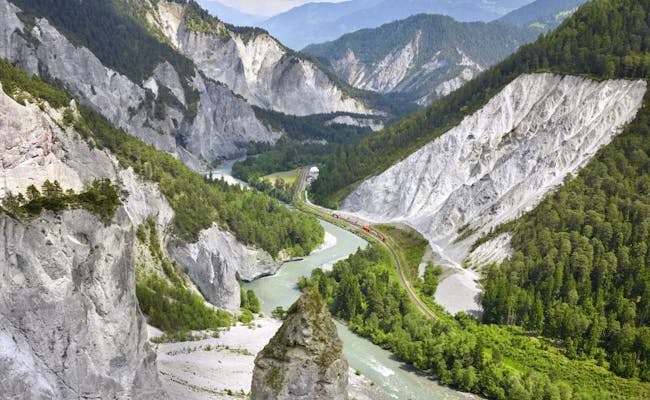 Rheinschlucht (Photo: MySwitzerland)
Rheinschlucht (Photo: MySwitzerland) Landwasser Viaduct (Photo: Swiss Travel System)
Landwasser Viaduct (Photo: Swiss Travel System)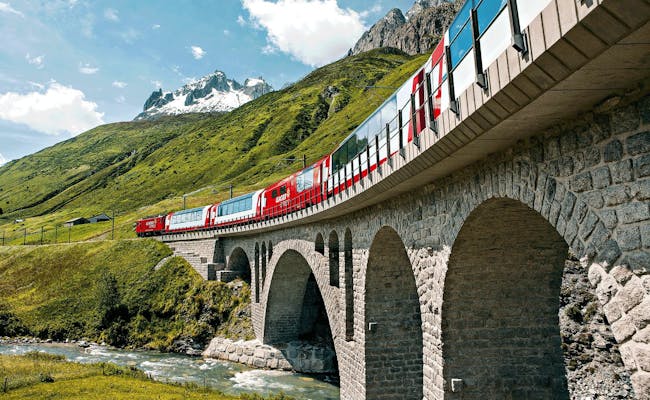 Glacier Express (Photo: Swiss Travel System)
Glacier Express (Photo: Swiss Travel System)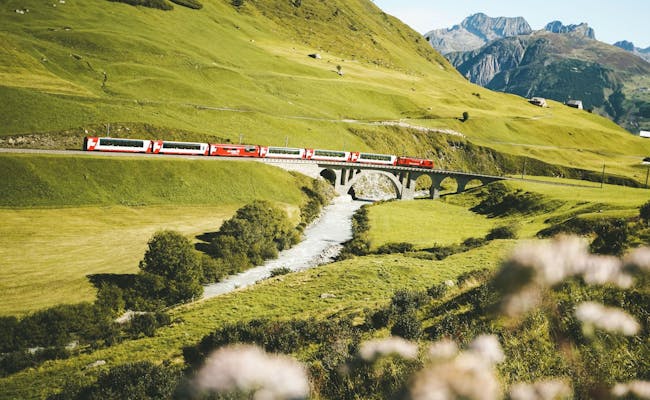 Glacier Express panoramic train at Oberalppass (Photo: Swiss Travel System)
Glacier Express panoramic train at Oberalppass (Photo: Swiss Travel System)With its 55 tunnels and 196 bridges, the Bernina Express panoramic train travels the 156 km between Chur and Tirano, making it like the little brother of the Glacier Express. In terms of speed, they are about equal, as the Bernina Express glides over the tracks at a leisurely pace.
What’s special about the Bernina Express is that it goes beyond the Swiss border, and you'll need to switch modes of transport along the way. After about four hours, the panoramic train of the Rhaetian Railway reaches Tirano in Italy, from where the Bernina Express Bus covers the remaining 90 km to Lugano.
By crossing the Alps, you’ll get to marvel at glaciers and a few hours later find yourself surrounded by palm trees. It’ll be hard to find a more contrasting train journey within such a short time.
Learn more about the Bernina Express in our review that we've written about this panoramic train.
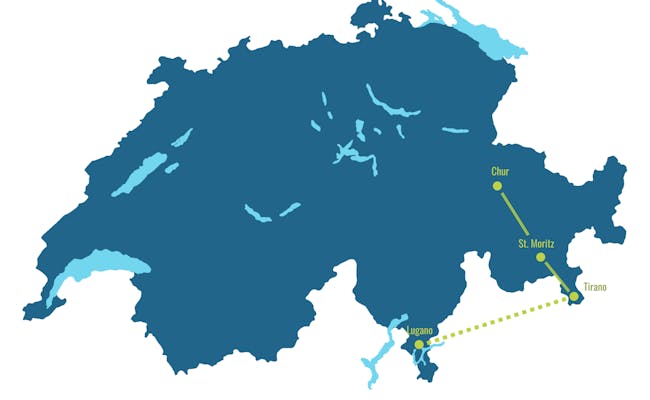 Bernina Express Route
Bernina Express Route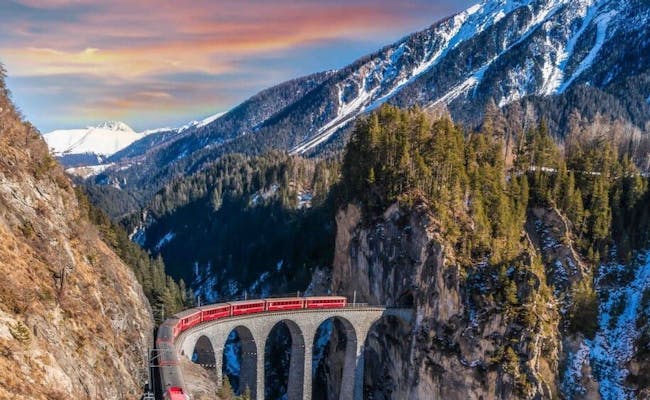 Bernina Express (Photo: Swiss Travel System)
Bernina Express (Photo: Swiss Travel System)The Bernina Express begins its journey in Chur and then shares its route with the Glacier Express until St. Moritz. Thus, this panoramic train also passes through the Rhine Gorge, over the Landwasser Viaduct and along the confusing Albula line into the Engadine.
From St. Moritz, the train climbs steeply up to Ospizio Bernina, which at 2253 meters above sea level is the highest point on the Bernina Express route. On the way there you have a wonderful view of the Morteratsch glacier as well as the ice-cold and deep blue Lago Bianco.
After this steep climb, it's all downhill. Literally.
Heading towards Italy, the Bernina Express travels over various viaducts, through the fertile Val Poschiavo, past Lago di Poschiavo and, shortly before crossing the border into Italy, across another highlight.
The circular viaduct in Brusio allows the train to overcome the required height on a small area and demonstrates for a moment the effect of centrifugal force.
In Campocologno the train crosses the border to Italy and ends in Tirano, a small town in Lombardy. From here, the Bernina Express bus takes you back to Switzerland in Lugano during summer. It takes three hours to drive through the Mediterranean Valtellina and past Lago di Como.
 Bernina Express at Ospizio Bernina (Photo: Swiss Travel System)
Bernina Express at Ospizio Bernina (Photo: Swiss Travel System)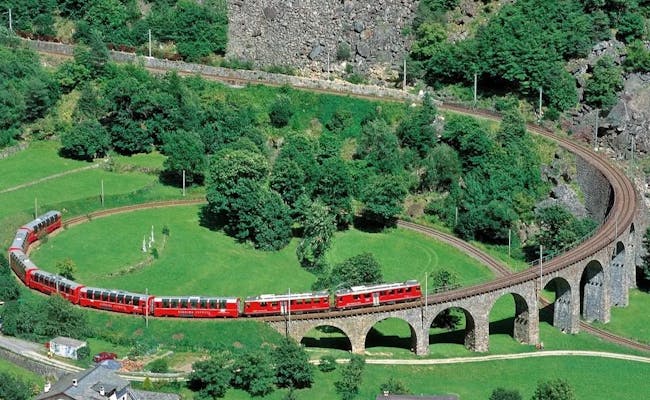 Viaduct in Brusio (Photo: MySwitzerland)
Viaduct in Brusio (Photo: MySwitzerland) Bernina Express in Winter (Photo: Swiss Travel System)
Bernina Express in Winter (Photo: Swiss Travel System)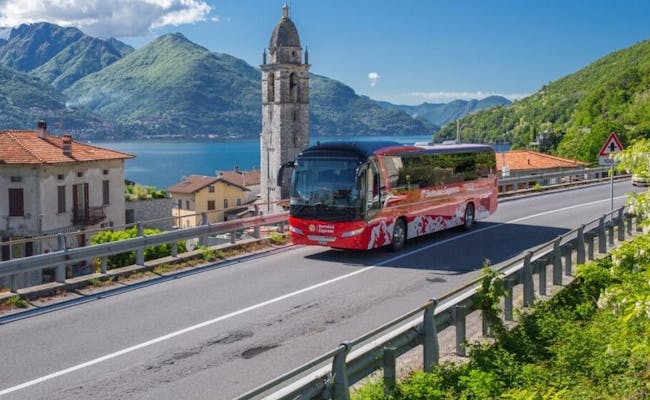 Bernina Express Bus (Photo: Swiss Travel System)
Bernina Express Bus (Photo: Swiss Travel System)The Golden Pass Line is a scenic train route made up of three segments. The first train – operated by the Zentralbahn – runs between Lucerne and Interlaken. After that, the regional train from BLS takes you to Zweisimmen, from where the Golden Pass Panoramic handles the third segment to Montreux. In total, the route is 191 km long, taking about six hours if you go directly.
The Golden Pass Line connects the German-speaking and French-speaking parts of Switzerland, passing by some significant Swiss lakes. From the Lake Lucerne to the Lake Brienz and the Lake Thun, all the way to Lake Geneva, they’re all part of the journey. You can also catch a glimpse of the Giessbach Falls along the way.
Since the Golden Pass Line runs right through Switzerland, it’s super easy to include it in your travel itinerary through Switzerland.
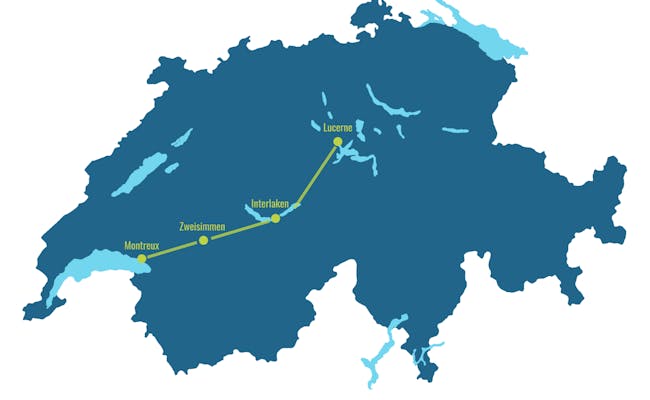 Golden Pass Line Route
Golden Pass Line Route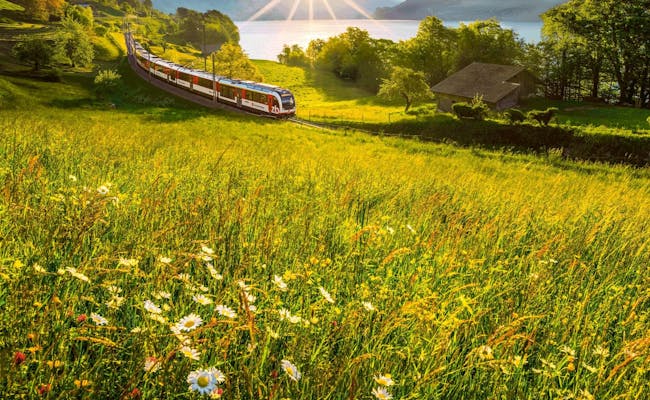 Golden Pass Line with the Zentralbahn (Photo: Swiss Travel System)
Golden Pass Line with the Zentralbahn (Photo: Swiss Travel System)Coming from the east, the GoldenPass Line starts in Lucerne with the Lucerne–Interlaken Express. It passes through stunning landscapes along the way. Before climbing up to the Brünig Pass at about 1,000 m above sea level, the train goes by three smaller lakes: Lake Alpnach, Lake Sarner, and Lake Lungern. After crossing the Brünig Pass, it begins its descent towards Brienz and meanders along Lake Brienz to Interlaken.
The views on this stretch are breathtaking. After Brienz, you can even catch a glimpse of the Giessbach Falls and the impressive Grand Hotel on the other side of the lake.
At Interlaken Ost, you'll need to change to another train. This one switches to the opposite shore and travels along Lake Thun to Spiez. The subsequent ride through the Simmental invites you to unwind and daydream. The train takes its time here, and you can feast your eyes on the narrow valley, dense forests, and the bubbling river.
After a quick change in Zweisimmen to the Golden Pass Panoramic, the journey continues up the hill and through the Berner Oberland landscape towards Gstaad. This ride offers yet another picture-perfect panorama. Green meadows, grazing cows, traditional wooden chalets, and in the background, the snow-capped peaks of the Alps represent Switzerland just as you imagine it.
On its final stretch to Montreux, the Golden Pass Line winds through the Vaud and Fribourg Alps and ultimately descends through the vineyards to Lake Geneva. Here, an incredibly contrasting journey comes to an end.
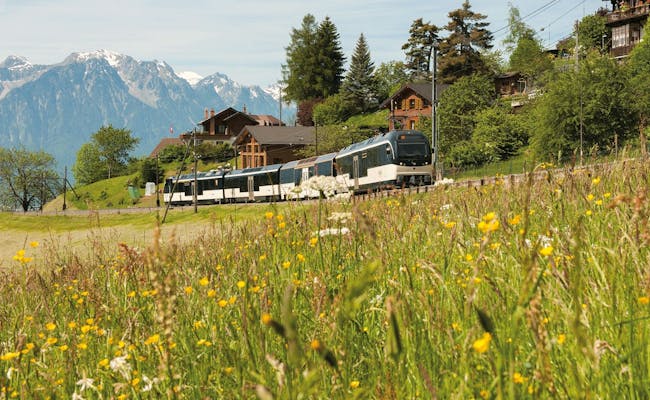 Golden Pass Line (Photo: Swiss Travel System)
Golden Pass Line (Photo: Swiss Travel System)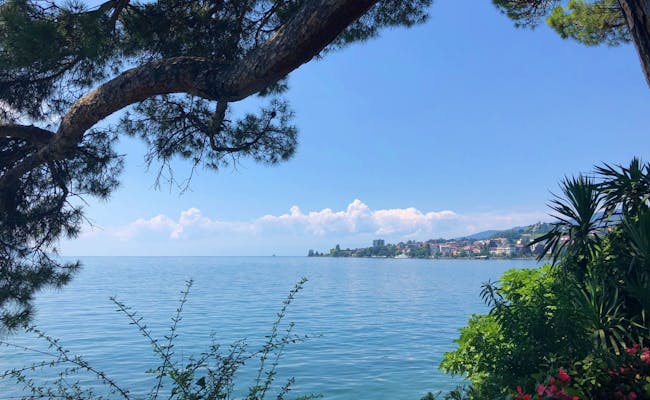 Montreux Riviera (Photo: Seraina Zellweger)
Montreux Riviera (Photo: Seraina Zellweger)The Gotthard Panorama Express is, in a way, a historic remnant of Switzerland's impressive railroad history. In summer 2016, the Gotthard Base Tunnel, the longest rail tunnel in the world, was inaugurated. It is 57 km long and shortens the journey to Ticino by 20%. Today, it's no longer necessary to travel via the traditional mountain route between Göschenen and Airolo. The faster route runs from Erstfeld directly to Bodio.
Until 2016, the mountain route was the only way to reach Ticino by train. Today, the traditional route is used by the Gotthard Panorama Express. This train takes its guests through the many helical tunnels and the Gotthard Tunnel, inaugurated in 1882, to the other side of the Alps. This panoramic journey between Lucerne and Lugano is combined with a steamboat-ride on Lake Lucerne and a train ride in the panoramic train through the old Gotthard tunnel.
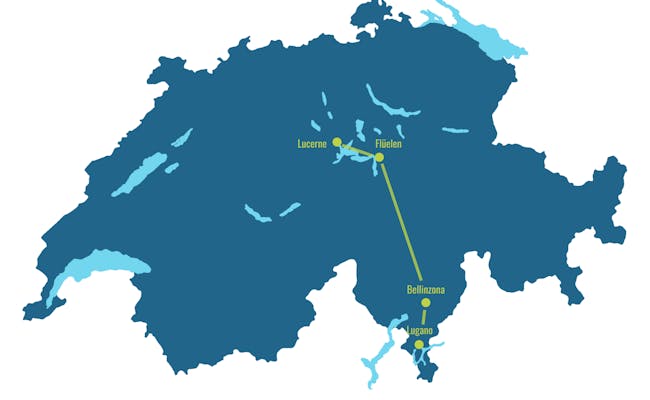 Gotthard Panorama Express Route
Gotthard Panorama Express Route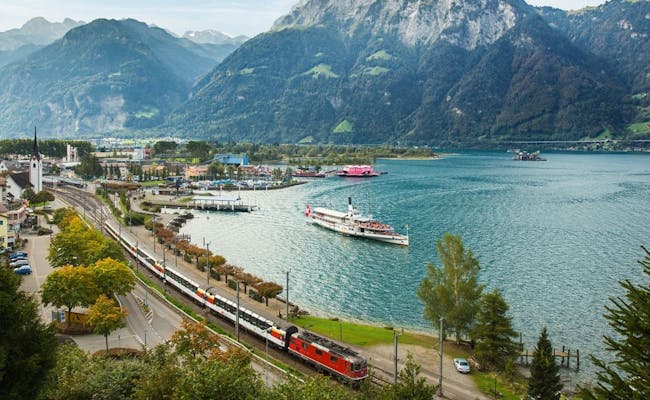 Gotthard Panorama Express on Lake Lucerne (Photo: Swiss Travel System)
Gotthard Panorama Express on Lake Lucerne (Photo: Swiss Travel System)On your journey from north to south, you first travel by boat from Lucerne. On the Lake Lucerne, you sail from Lucerne to Flüelen. This trip is either on a historic paddle steamer or the modern motorboat "Diamant". Along the way, you’ll see breathtaking landscapes and historical sites like the Tell Chapel and the Rütli Meadow.
In Flüelen, the panoramic train awaits you and continues the journey south to Lugano. It ascends through various spiral tunnels to Göschenen, where the old Gotthard Tunnel leads to Airolo. What’s special about this route is the "Chileli vo Wasse". The train passes by this small chapel in Wassen three times.
To gain the necessary height, the train makes some loops here, allowing you to view the charming chapel from different angles and heights. This "Chileli" is so famous among the Swiss that the dialect band "Lo & Leduc" even dedicated a song to it.
After passing through the original Gotthard Tunnel, you descend through the Mediterranean Ticino landscape. You’ll pass the medieval castles of Bellinzona until you reach Lugano, where a southern vibe with palm trees and Italian gelaterias awaits you.
 On the way in the Gotthard Panorama Express (Photo: Swiss Travel System)
On the way in the Gotthard Panorama Express (Photo: Swiss Travel System)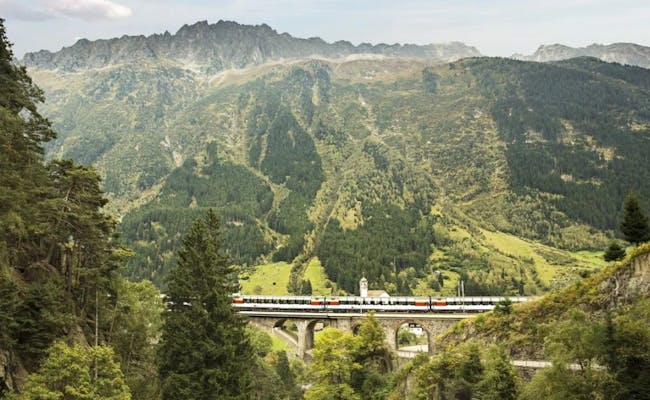 The famous Chileli in Wassen (Photo: MySwitzerland)
The famous Chileli in Wassen (Photo: MySwitzerland)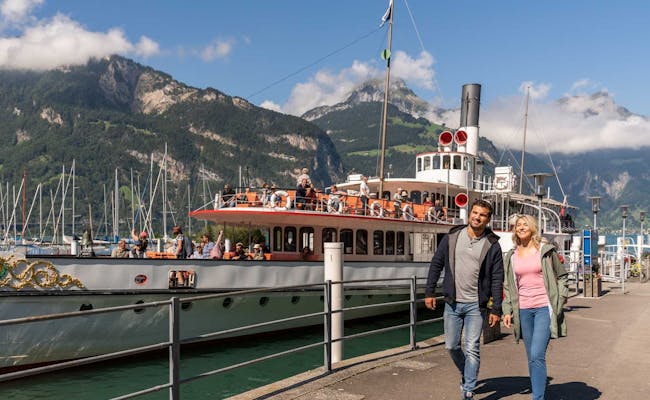 Ship in Flüelen (Photo: Swiss Travel System)
Ship in Flüelen (Photo: Swiss Travel System)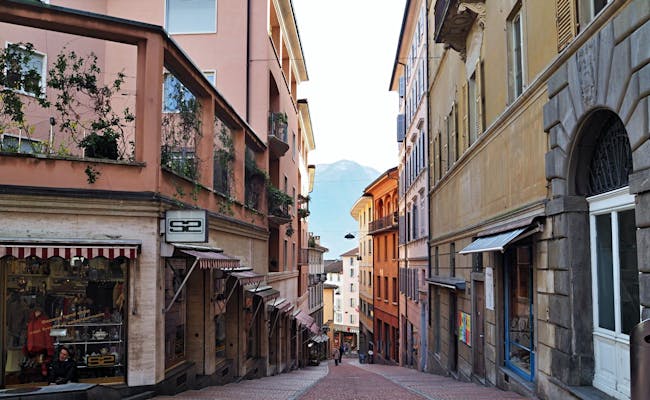 Lugano (Photo: Seraina Zellweger)
Lugano (Photo: Seraina Zellweger)The Voralpen Express isn’t a panoramic train in the traditional sense like the other candidates in this article. It doesn’t have oversized panoramic windows, nor is it specifically designed for tourists. However, it is the most comfortable and attractive connection between St. Gallen and Lucerne, offering beautiful views along the way.
Originally, the Voralpen Express ran between Romanshorn on the Lake Constance and Lucerne. In 2019, though, the service was shortened and it now either starts or ends in St. Gallen.
It’s used as a commuter train, but due to the diverse and scenic route, it’s also quite popular with day-trippers. The train covers the approximately 125 km in just under two and a half hours, putting it in the kangaroo category with an average speed of 55 km/h.
Goodbye, leatherback turtle.
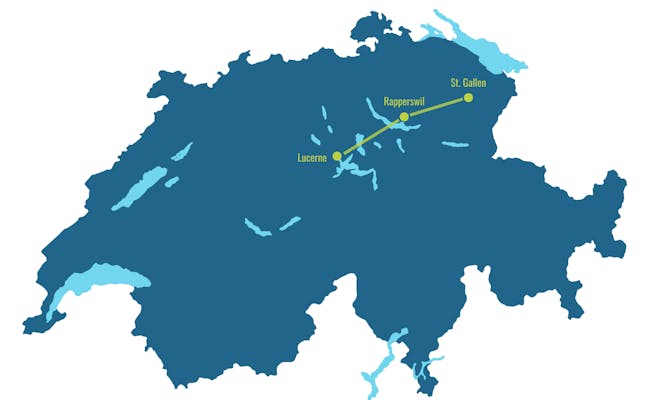 Voralpen Express Route
Voralpen Express Route Voralpen Express (Photo: Swiss Travel System)
Voralpen Express (Photo: Swiss Travel System)In the east, the Voralpen Express starts in the beautiful city of St. Gallen. Shortly after its departure, it crosses the 99 m high Sitter Viaduct, the tallest railway viaduct in Switzerland. Next, in Herisau, there's another viaduct that impresses with its unobstructed view of the Alpstein mountain range. The train then winds its way through green, hilly landscapes typical of Eastern Switzerland, as they glide by on either side of the windows.
After passing through two long tunnels at Wasserfluh and Ricken, the Voralpen Express arrives in Rapperswil on the banks of Lake Zurich. This charming small town with its striking castle is located at the eastern end of the dam that leads across Lake Zurich to Pfäffikon. Along this dam, there's a wooden walkway that forms part of the Camino de Santiago and is very popular for strolls.
If you want to break up your journey a bit, a short stop in Rapperswil followed by a walk over the bridge to Pfäffikon would be a great option. In Pfäffikon, you can continue your journey on the Voralpen Express. From here, the train climbs up the hill to Rothenthurm, where you'll pass the largest contiguous high moor area in Switzerland.
After that, you'll be accompanied by more stunning views of the Alps. Before long, Lake Zug and Lake Lucerne will join the panorama. After a ride along the lake and a final stop at the Transportation Museum in Lucerne, you'll arrive in the city of Lucerne.
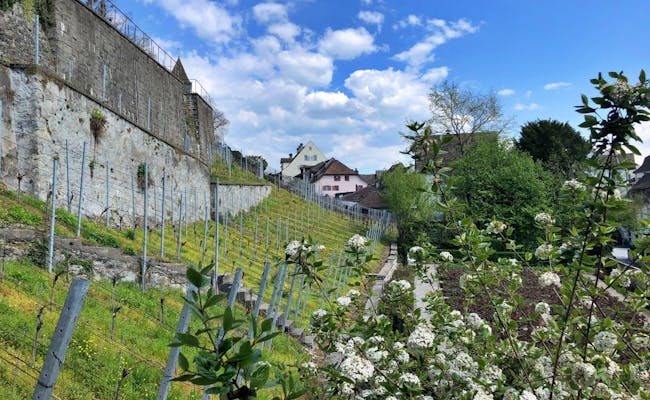 Rapperswil is on the route of the Voralpen Express (Photo: Seraina Zellweger)
Rapperswil is on the route of the Voralpen Express (Photo: Seraina Zellweger) Voralpen Express (Photo: Swiss Travel System)
Voralpen Express (Photo: Swiss Travel System)Granted, these five panoramic trains rightly enjoy a high popularity. But when you consider the several thousand kilometers of railway tracks in Switzerland, there are countless other scenic sections. These may be less well known, but some of them are also very impressive. So, should you be looking for a slightly "more ordinary" and less exclusive route, here's a small selection to finish this article:
In a country with 5300 km of railway tracks, you'll find more than enough train rides with stunning views that'll make your heart beat faster. So buy your ticket, grab a window seat and press your nose against the glass.
The train first travels through the Zimmerberg Base Tunnel. After that, the route runs directly along the western shore of Lake Zurich up to Pfäffikon. So, you can enjoy a great view of the lake on the left side of the train. Once the train has passed the stop at Ziegelbrücke, it once again goes right by another lake. It's the Walensee, which you can also see well on the left side until Walenstadt.
On the right side, you get a direct view of the Glarus Alps. After Sargans, you'll see Pizol prominently in the foreground.
The journey from Chur to Arosa takes an hour. After a relaxing trip through Chur, the train climbs up high. It gains about 1000 meters in altitude over just 26 kilometers. At the start, on the southern side, you'll see the Dreibündenstein plateau with Brambrüsch. On the northern side is the Hochwang range, with Hochwang reaching an elevation of 2533 m above sea level as the highest point. You'll be surrounded by almost untouched nature. Before long, you enter the mountainous landscapes of Schanfigg. Schanfigg is the long valley that leads straight to Arosa. The Langwies Viaduct is a special highlight of this trip. And it goes even higher: the train climbs up to 1739 m above sea level in Arosa, totaling an altitude gain of 1155 meters since Chur. Now you'll gaze at the Weisshorn range, crowned by the Weisshorn reaching 2653 m above sea level.
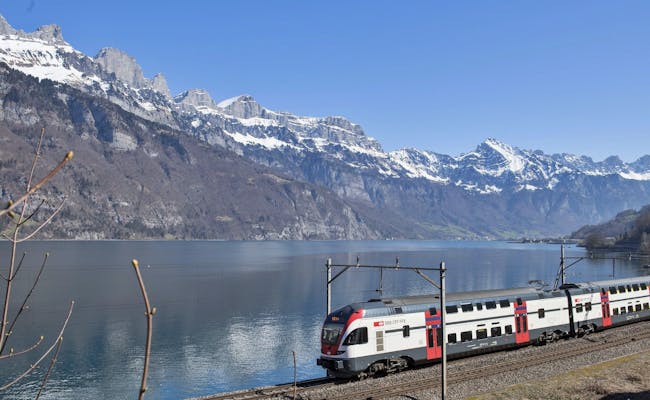
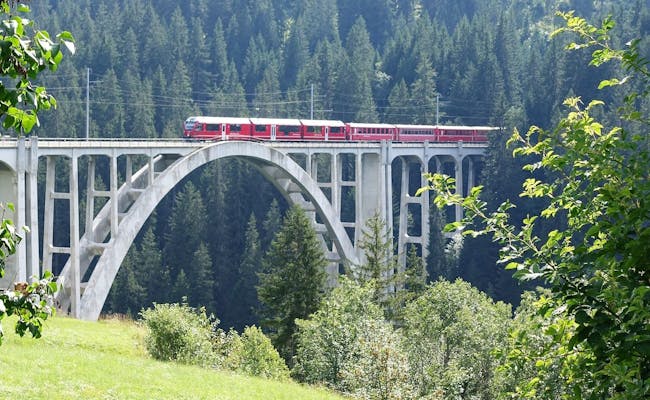
The InterRegio takes one hour to get from Chur to Filisur. After that, you continue with the regional train for about half an hour to Davos. Near Filisur, the Rhaetian Railway crosses the world-famous Landwasser Viaduct, which curves into a tunnel at a height of 65 m and a length of 142 m above the Landwasser Valley. On the way, you’ll also find the Wiesen Viaduct, which, while not as famous, rises to nearly 89 m. Both viaducts are only about 3 km apart.
The mountains you see on the left (northern) side from Chur belong to the Plessur Alps. The Lenzerhorn stands out at 2906 m above sea level. Further along on the same side, you’ll see the Strelakette of the Plessur Alps, with the Guggernellgrat prominently visible at 2810 m above sea level.
The other side of the train (right/southern side from Chur) shows you the distinctive rock of Piz Mitgel, which rises to 3159 m above sea level to the southwest of Filisur. Just behind it, the slightly taller Piz Ela peeks out at 3339 m above sea level. As the train continues toward Davos, you'll see the Albula Alps in their full beauty.
The Rhaetian Railway travels the same route from Chur to Filisur as it does for the train ride to Davos. However, after Filisur, it heads south and passes several spiral tunnels after the Landwasser Viaduct. These tunnels are located between Bergün and Preda and look spectacular from below. By the way, there’s a popular sledding run in winter from Preda to Bergün.
From the right side of the window, you can get a great view of the peaks Piz Bial (3,061 m above sea level) and Piz Ot (3,247 m above sea level) of the Albula Alps towards St. Moritz. Later on, Piz Nair, at 3,030 m above sea level, comes into view. On its eastern slope, you’ll find the popular St. Moritz ski area, Corviglia.
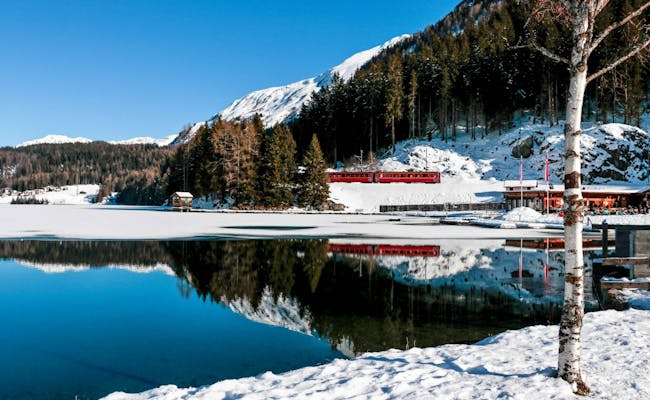
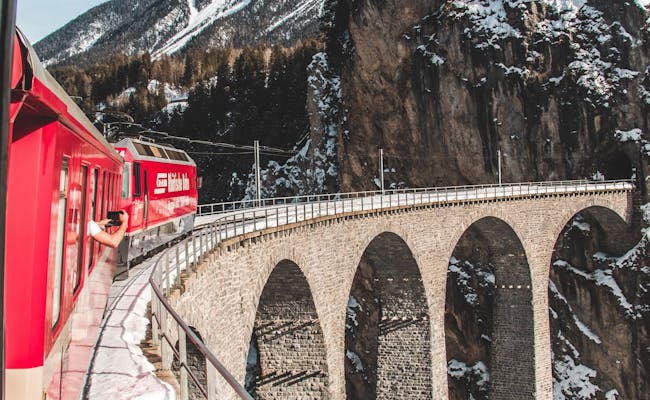
The Emmental is located in the hilly Bernese Mittelland. The train departs from Bern, passes through Langnau, and also goes through the Entlebuch, a huge biosphere that is part of the UNESCO World Heritage Site. West of Langnau, you can see (on the left side of the train from Bern) the Blasenflue hills, with the Blasenflue being the highest peak at 1,118 m above sea level. The train goes right through the 400 km² UNESCO Biosphere Park Entlebuch. Just before arriving in Lucerne, you can spot the distinctive Pilatus on your right.
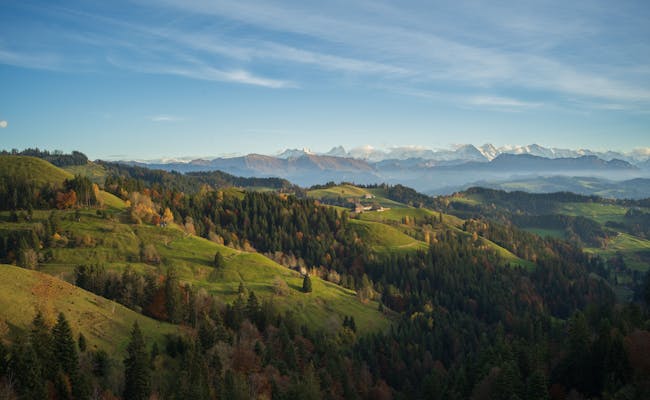
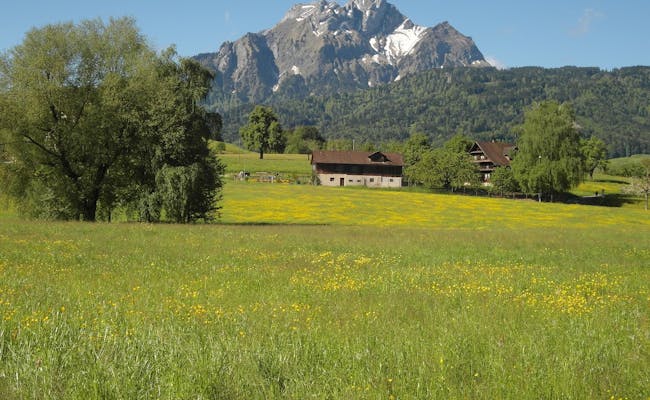
The train route from Schaffhausen to Romanshorn takes you through unique nature and past some attractions. As you head towards Romanshorn, you'll first see the Munot fortress towering over Schaffhausen at the start of your journey. It's been guarding the city since the 16th century. From the Feuerthalen train station, you’ll have a better view on the left side of the train. Initially, you can see the High Rhine, which you can enjoy until you reach the beautiful town of Stein am Rhein. After a quick glance at the medieval houses on the other side of the Rhine, you’ll spot the pilgrimage church of St. Otmar on a small island. Throughout the remainder of the journey to Romanshorn, you'll have Lake Constance on your left. Occasionally, you’ll see vineyards on the right side.
This pleasant trip through Appenzell takes about an hour. As soon as you leave St. Gallen, a picturesque landscape unfolds on both sides of the train. Small towns with scattered houses are interspersed with fields, meadows, and forests. Heading towards Wasserauen, on the left, you’ll spot the Hundwiler Höhi (1,306 m above sea level), a popular viewpoint. Later on the right, you can catch a glimpse of the Alpstein massif in the distance. Its highest peak is the summit of Säntis (2,502 m above sea level).

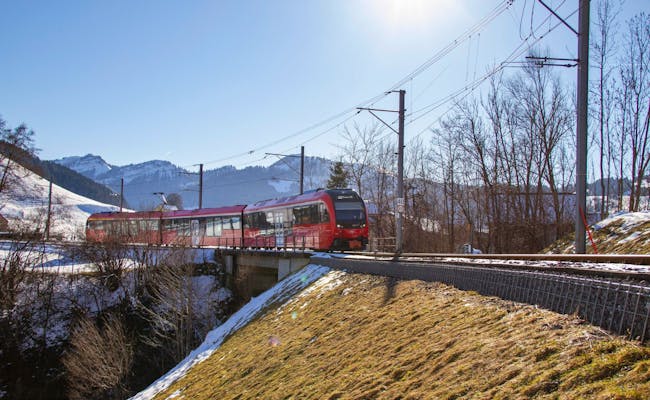
The train ride between Lausanne and Montreux is one of a kind. You can't really sit on the "wrong" side of the train. Facing Montreux, you'll see the stunning Lake Geneva with its ships and boats on the right side. But the left side is just as interesting. Here, you'll discover the vast Lavaux wine region. This vineyard area spans about 830 hectares, dramatically situated on terraces by the Lake Geneva. Since 2007, it has been part of the UNESCO World Heritage. The vines benefit from the reflection of the sun's rays coming off the lake. Additional warmth is stored in the stone walls surrounding the vines.
On your route from Interlaken Ost to Zermatt, you'll change trains twice, but the stunning scenery makes it worth it. The first leg of your journey takes you from Interlaken Ost to Spiez. You'll see Lake Thun to your right and have a good view of the Jungfrau region to your left. This leg is part of the Golden Pass Express.
Continuing from Spiez to Visp and then on to Zermatt, you'll travel right through the Bernese and Valais Alps. Between Visp and Zermatt, you'll experience part of the Glacier Express route. So get ready for some breathtaking views. In Zermatt, you'll be greeted by the towering peaks, including the Matterhorn and Dufourspitze.
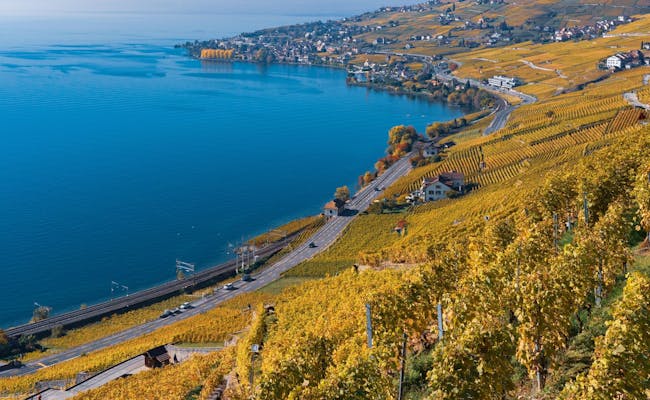
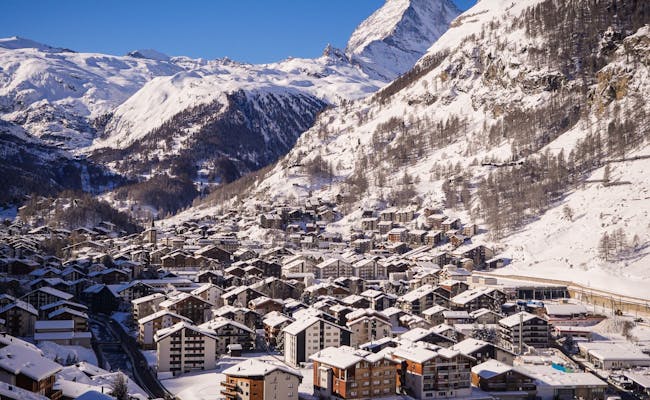
On the regional train, you travel between St. Moritz and Alp Grüm. This route takes you through the Engadine Alps over the Bernina Pass, which sits at an elevation of 2,235 m above sea level. Alp Grüm originated from a mountain farm and is a small settlement with a restaurant at the railway station. From its viewing terrace, the view is especially spectacular.
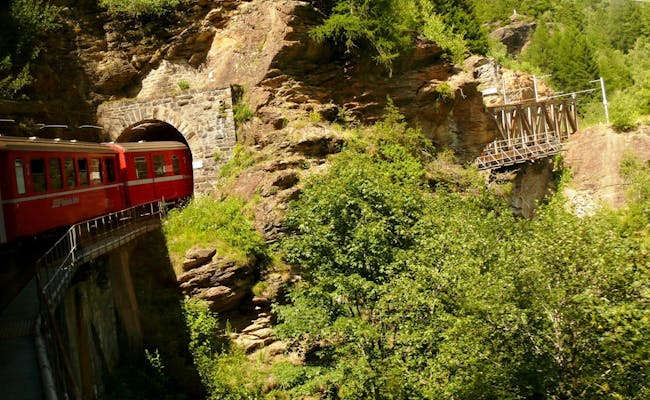
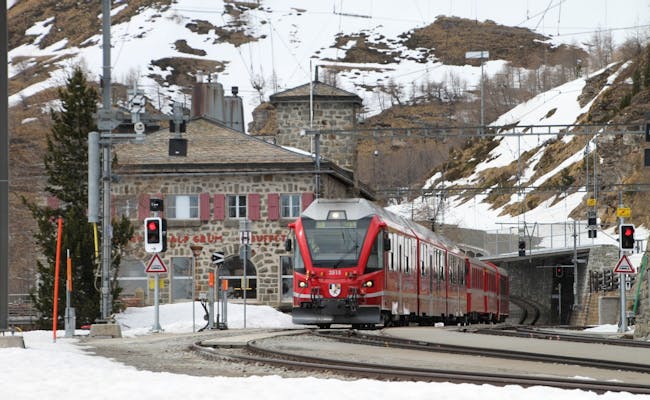
The [Centovalli Railway]() connects Ticino with Italy, extending the Gotthard line to the Simplon line in Domodossola.
This cozy narrow-gauge railway takes you through the "100 valleys" of Centovalli and into the neighboring Valle Vigezzo. You'll pass through numerous tunnels and cross 83 bridges and viaducts. All around, you see a sleepy and largely untouched landscape with the Melezza River and beautiful waterfalls. Small settlements are scattered throughout the countryside. Only in Italy do the towns that the little train traverses become a bit larger. And you'll notice that there are particularly many churches along the route. Taking a ride on this charming train is a unique experience.
In a country with 5300 km of tracks, you will find one or two views on most train journeys that will make your heart beat faster. So buy a ticket, grab a window seat and press your nose against the window.
